Korg Volca Drum
$100.99
Unleash your creative spirit with the Korg Volca Drum – the perfect beat-making machine for any producer!
Compare
Description
Korg Volca Drum Synthesizer: An Overview
Korg has been known for producing quality synthesizers and electronic musical instruments. Their Volca series is popular among electronic music producers and enthusiasts. One of the latest additions to the Volca line is the Volca Drum Synthesizer. It is a digital percussion synthesizer that offers a vast array of sound creation possibilities. In this article, we will take a closer look at its features and performance.
Features
The Volca Drum comes with six parts, allowing you to create complex beats and rhythms. These parts include a kick, snare, tom, hi-hat, cymbal, and a sine wave bass. Each part has its own oscillator, filter, and amp envelope. You can adjust the pitch, decay, and attack, among other parameters. Besides, it has a waveguide resonator that adds lush reverb and delay to your sounds. You can sync the Volca Drum with other Volca devices or MIDI-enabled instruments using its Sync In and Out ports. It also has a built-in speaker, making it a portable option for music production on the go.
Performance
The Volca Drum’s interface is intuitive and user-friendly, making it easy for both beginners and experienced producers to use. Its control knobs are responsive and smooth, allowing you to tweak sounds with precision. You can create diverse rhythms by layering different parts or by using the step sequencer. The sequencer lets you program up to 16 steps per part and has several playback modes like reverse, bounce, and random. You can save and recall up to 16 patterns, making it convenient to switch between different beats.
The Volca Drum’s sound quality is impressive. You can create both synthetic and organic percussive sounds, ranging from deep kicks to snappy snares. The waveguide resonator adds a unique character to your sounds, creating an atmospheric and hypnotic vibe. The drum machine is versatile and can fit a wide range of music genres, including techno, hip-hop, and experimental electronic music.
Conclusion
The Korg Volca Drum Synthesizer is an excellent addition to the Volca series. It’s a versatile drum machine that offers a vast array of sound creation possibilities. Its interface is user-friendly, and its sound quality is top-notch. Whether you’re a beginner or a seasoned producer, the Volca Drum is an excellent investment. It’s affordable, portable, and flexible, making it a great value for money.
Korg Volca Drum properties
| Product name |
Volca Drum |
| Brand |
Korg |
| Type |
Keyboard Instruments |
| Keyboard Instrument |
Synthesizer |
| Keys |
Yes |
| Number of Keys |
16 pcs |
| Pads |
Yes |
| Rotary Controls |
Yes |
| Connections |
3.5mm (Aux), Headphone, MIDI, MIDI In |
| Colour |
Black |
Frequently Asked Questions:
How does the Korg Volca Drum's built-in sequencer function, and what features allow for advanced rhythm programming?
The Korg Volca Drum's built-in sequencer is a powerful tool that allows for the creation of complex rhythms and patterns. The sequencer has up to 16 steps, which can be programmed with various parameters such as pitch, accent, and swing. One unique feature of the Volca Drum's sequencer is the ability to create multiple variations or fills within a sequence. This is achieved through the use of fill slots, which can be programmed with different patterns or rhythms that are triggered at specific points in the sequence. Additionally, the Volca Drum's sequencer offers both real-time and step recording modes. Real-time mode allows for live performance and improvisation, while step mode enables precise programming of individual notes and parameters. The sequencer also features a range of quantization options that allow for adjustment of timing and timing accuracy to suit different musical styles. Another notable feature is the ability to sync the Volca Drum's sequencer with other Korg Volca series devices, as well as external MIDI sources, via its built-in clock output and input. This makes it easy to integrate the Volca Drum into a larger setup or live performance setup. Overall, the combination of these features makes the Korg Volca Drum's sequencer an incredibly versatile and powerful tool for advanced rhythm programming. Whether you're a seasoned producer or just getting started with electronic music production, the Volca Drum's sequencer is sure to impress with its range of capabilities and ease of use.
How can I properly program and sequence complex rhythms using the Korg Volca Drum's step sequencer and pattern storage capabilities?
To properly program and sequence complex rhythms using the Korg Volca Drum's step sequencer and pattern storage capabilities, follow these steps:
1. Understand the basic functionality of the Volca Drum's sequencer:
- The sequencer has 8 tracks for programming different percussion sounds. Each track has 32 steps, with each step having a note length, velocity, and accent value. You can record in real-time, or use the volca's intuitive interface to program steps one by one. The Volca Drum also has a swing function that adds a humanized feel to your rhythms. Patterns can be chained together using the pattern chain feature for complex sequences. Start with a simple rhythm:
- Begin by programming a basic rhythm on one or two tracks, focusing on getting the timing and note placement correct. You can also use the volca's built-in drum patterns as a starting point and modify them to fit your desired rhythm. Add complexity:
- To add complexity, start by programming additional rhythms on separate tracks and experimenting with different accent values and note lengths. Use the pattern chain feature to chain these patterns together to create longer sequences. You can also use the volca's built-in effects like delay and reverb to add depth to your rhythms. Edit and refine:
- Use the volca's edit mode to fine-tune individual steps, adjusting note lengths, velocities, and accents as needed. You can also use the quantize feature to automatically align your rhythms to a grid for more precise timing. Don't be afraid to experiment with different rhythmic patterns and sequences until you find what sounds best. Store and recall:
- Once you have created a complex rhythm that you like, store it in the volca's pattern memory. You can then recall this pattern at any time during your performance or use it as a starting point for future sequences. You can also save multiple patterns to different slots and switch between them using the volca's scene function. Practice and perform:
- Finally, practice playing your complex rhythms live by syncing the Volca Drum with other Korg synthesizers or external gear using MIDI clock sync. You can also use the built-in metronome to help you stay in time while practicing.
How can I program complex rhythm patterns using the step sequencer and modulation matrix on the Korg Volca Drum synthesizer?
To program complex rhythm patterns using the step sequencer and modulation matrix on the Korg Volca Drum synthesizer, follow these steps:
1. Connect your Korg Volca Drum to a power source and turn it on. Press the "MODE" button until the "SEQ" mode is displayed on the screen. This will activate the step sequencer. Use the "STEP" button to select the track you want to work on (there are 8 tracks in total). Select a pattern length by pressing the "PATTERN" button until the desired number of steps is displayed. You can choose from 1, 2, 4, 8, 16, or 32 steps per pattern. Use the "REPEAT" button to select how many times the pattern will repeat within a song. You can choose from 1, 2, 4, 8, or 16 repeats. Begin programming your rhythm by pressing the "REC" button and then using the "STEP" button to move through each step in the sequence. Use the "MUTE" and "SOLO" buttons to mute or solo individual tracks as needed. To add variation to your pattern, use the modulation matrix to apply parameter changes over time. Press the "MOD" button to access the matrix, then select a source (such as an envelope or LFO) and a destination (such as cutoff frequency or resonance). Use the "INT" button to set the depth of the change, and the "TIME" button to set when it will occur. Experiment with different rhythmic patterns and modulation settings until you achieve the sound you want. To save your pattern, press and hold the "SAVE" button while turning the Volca Drum off. The pattern will be saved to memory for future use.
What unique features does the Korg Volca Drum synthesizer offer for creating complex rhythm patterns and loops?
The Korg Volca Drum synthesizer stands out from other rhythm machines due to its advanced sequencing capabilities and versatile sound engine. Its 16-step sequencer allows for intricate pattern creation, with the ability to sync multiple units via MIDI or clock signals. Each of the eight digital voices has its own dedicated envelope generator, filter, and LFO, enabling complex rhythm patterns and loops that would be difficult to achieve on traditional drum machines. Additionally, users can save up to 128 sequences and access them using the intuitive button matrix interface. The Korg Volca Drum synthesizer is a powerful tool for creating dynamic and unique rhythms in a variety of musical genres.
How do I properly adjust the decay time on the Korg Volca Drum to achieve a more realistic and consistent sound when using it to play rhythmic patterns?
1. Understand the Decay Time Control**: The decay time control on the Volca Drum affects how long it takes for the sound to fade away after the note is struck. A shorter decay time means the sound will cut off more quickly, while a longer decay time will make the sound linger. Start with the Default Setting**: Begin by setting the decay time to its default position (usually around 50-60%). This will give you a good starting point for comparison as you adjust it. Adjust in Small Increments**: To avoid drastic changes that might affect your overall sound, start adjusting the decay time in small increments of about 5-10%. This will allow you to fine-tune the sound without making it too loud or too quiet. Pay Attention to Attack and Release**: The attack and release times also play a significant role in how realistic your sounds are. A good starting point is to set the attack time around 20-30% and the release time around 50-60%. Adjust these settings as needed based on how they affect your overall sound. Listen to Your Sound**: The key to adjusting the decay time effectively is to listen to your sound carefully. Try playing a single note repeatedly, paying attention to how it sounds when it's first struck and how long it takes for it to fade away completely. This will help you develop your ear for what sounds realistic. Experiment with Different Settings**: Once you have an idea of the range that works best for your sound, experiment with different settings to see what gives you the most realistic and consistent results. Remember, this is a process of trial and error, so be patient!
7. Consider the Type of Sound You're Producing**: If you're producing percussive sounds like snare drums or cymbals, you might want to aim for a shorter decay time (around 20-30%). For more mellow sounds like bass drums or toms, you can opt for a longer decay time (around 60-80%). By following these steps and paying close attention to how the sound changes with each adjustment, you should be able to find the perfect balance of realism and consistency for your rhythmic patterns.
Before you buy Korg Volca Drum
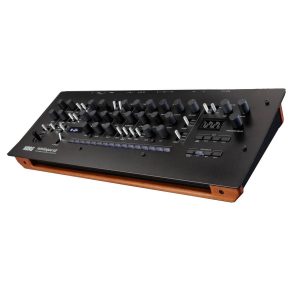 Korg Minilogue XD Module
Korg Minilogue XD Module 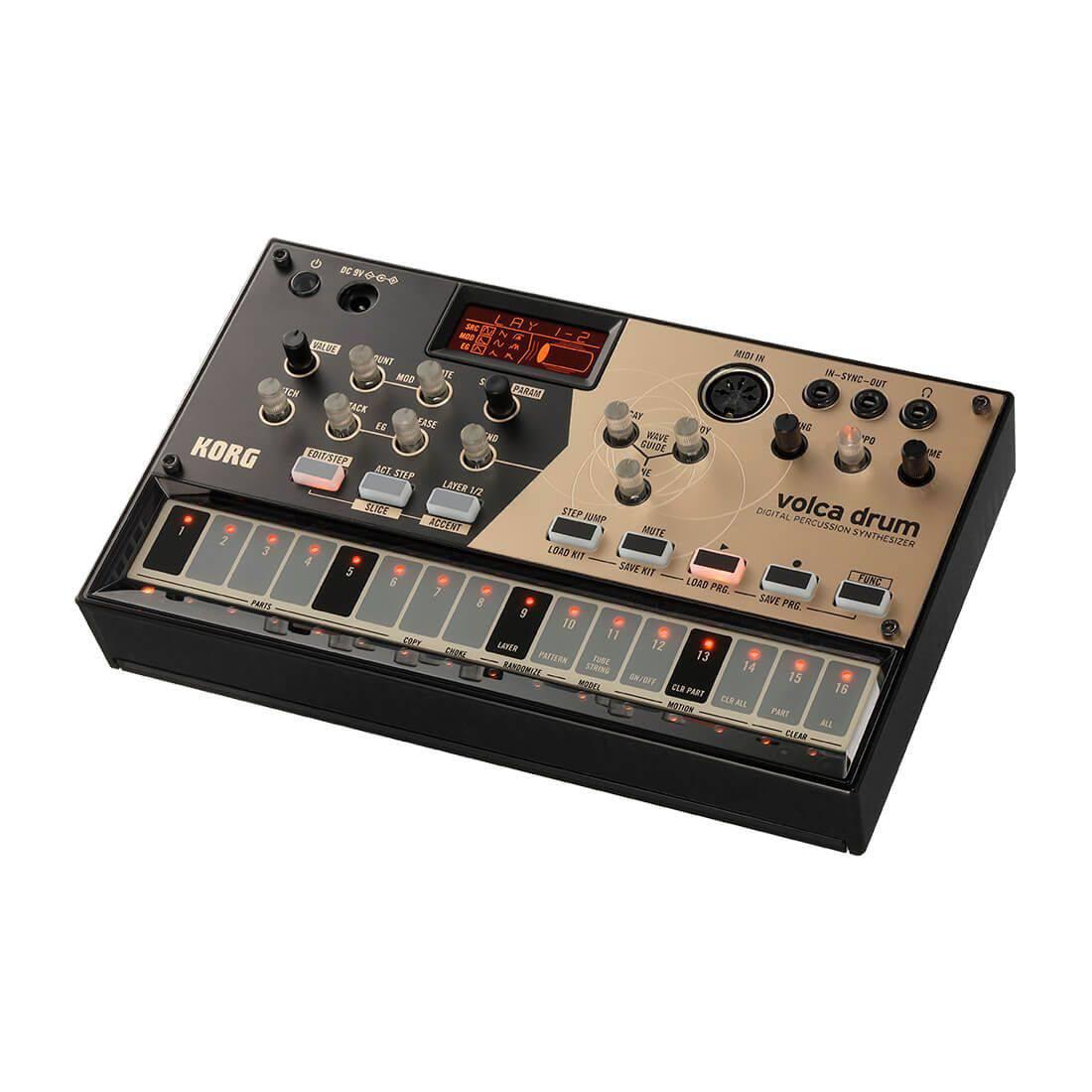


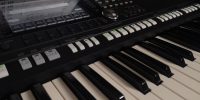
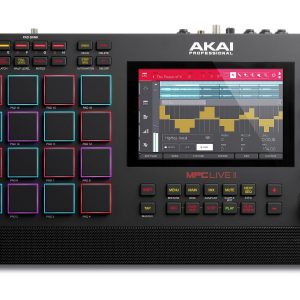

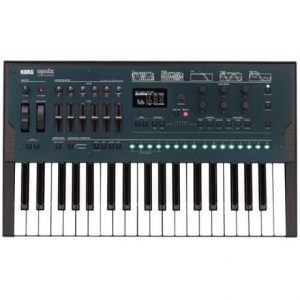
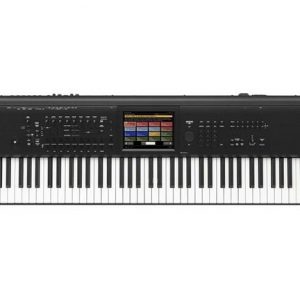
Alexandra –
As I stepped off the plane in Wichita, the crisp autumn air hit my cheeks, a stark contrast to the humid climate I had left behind. The city was alive with the hustle and bustle of businesses getting back to work after the summer break. My friend Jeremy, a local musician, had suggested that I take a break from my hectic business schedule and explore the world of electronic music production.
He led me to a quaint music store nestled in the heart of downtown Wichita. The shelves were lined with an array of synthesizers, each one promising to unlock new realms of sound. My eyes widened as I took in the sight before me, but it was Jeremy’s excited whisper that caught my attention: Have you considered trying the latest offering from Korg?
With a sense of anticipation and tension building within me, I agreed to give it a try. The salesman handed me a sleek, compact device that fit comfortably in the palm of my hand. As I powered it up, the machine came alive with an electronic pulse that sent shivers down my spine.
The economy in Wichita, like many cities, had seen its fair share of challenges in recent years. Businesses were adapting to the digital age, and technology was becoming increasingly important. This new device represented not only a personal indulgence but also an investment in the future.
As an amateur exploring this new world, I marveled at the ease with which I could create complex rhythm patterns. The Volca Drum seemed designed for beginners like me, offering intuitive controls and endless creative possibilities. But as I delved deeper into its capabilities, I began to realize that this was no toy.
Professionals would appreciate the depth and versatility of the device, with advanced features allowing them to craft intricate compositions and live performances. It was a rare find an instrument that bridged the gap between amateur and professional use, offering endless potential for growth and exploration.
As I left the store with my new acquisition, I couldn’t help but feel a sense of excitement and wonder at the sonic landscapes I would soon be creating. The city of Wichita hummed along in the background, its economy and businesses continuing to thrive as I embarked on this musical journey.
And so, as I settled into my room at the 316 Hotel, I closed my eyes and let my imagination run wild ready to dive headfirst into the world of electronic music production with my new companion by my side.
Josie Rush –
Despite Alexandra’s glowing review, I found the Korg Volca Drum to be a soulless, uninspiring instrument that failed to deliver on its promises. As I struggled to create anything remotely coherent with it, I couldn’t help but feel like I was trapped in a never-ending cycle of disappointment and frustration – much like the astronauts on the ISS who were forced to delay their return due to technical issues, only to be rescued by SpaceX’s Crew-9 mission today, a stark reminder that even the most advanced technology can fail us.